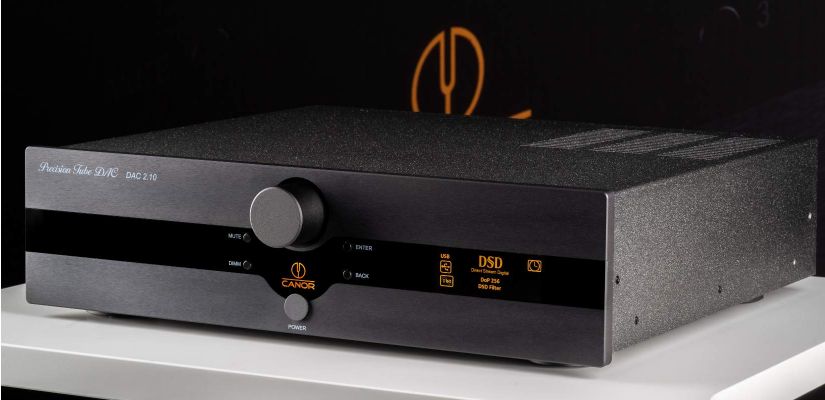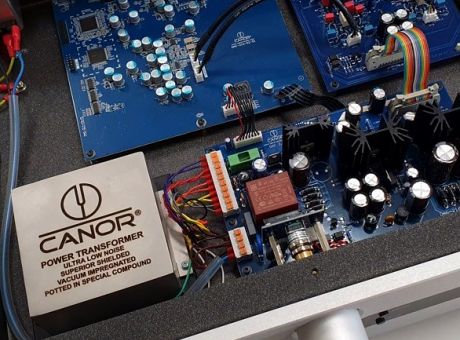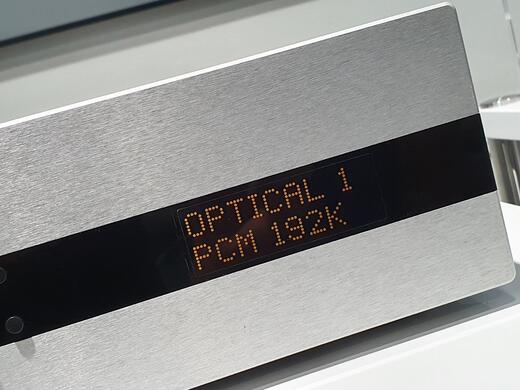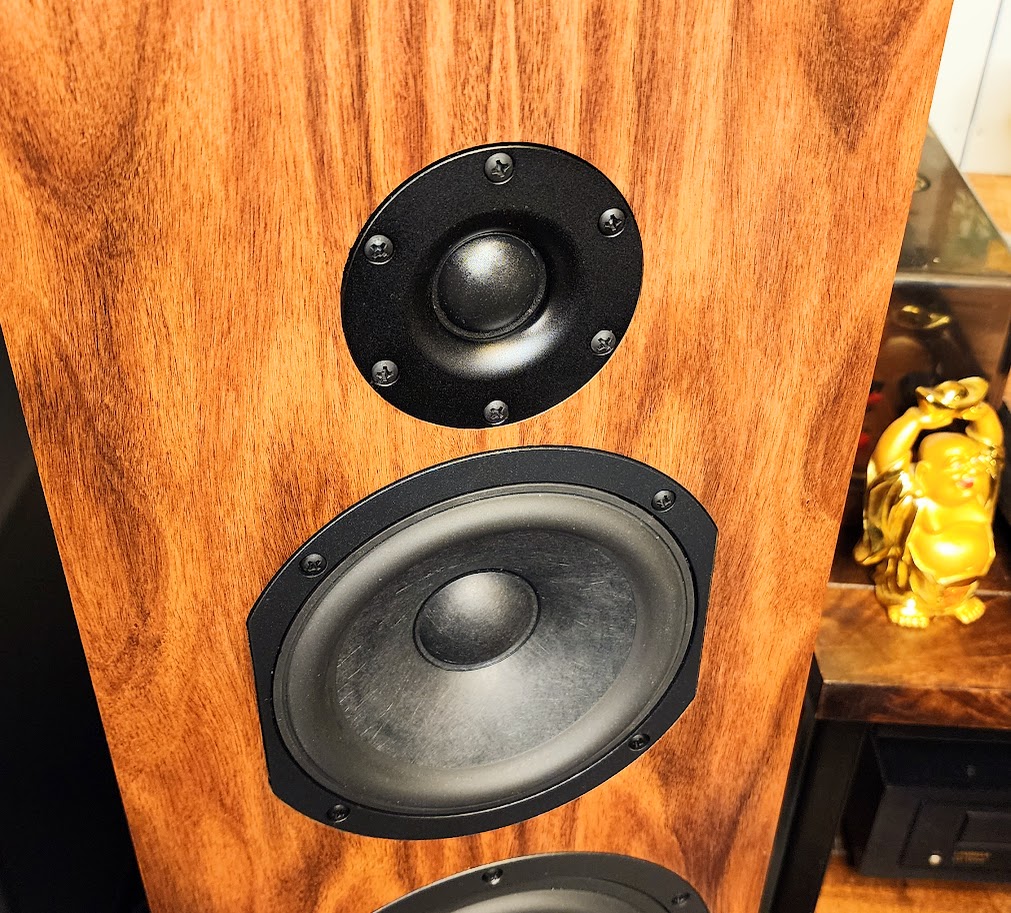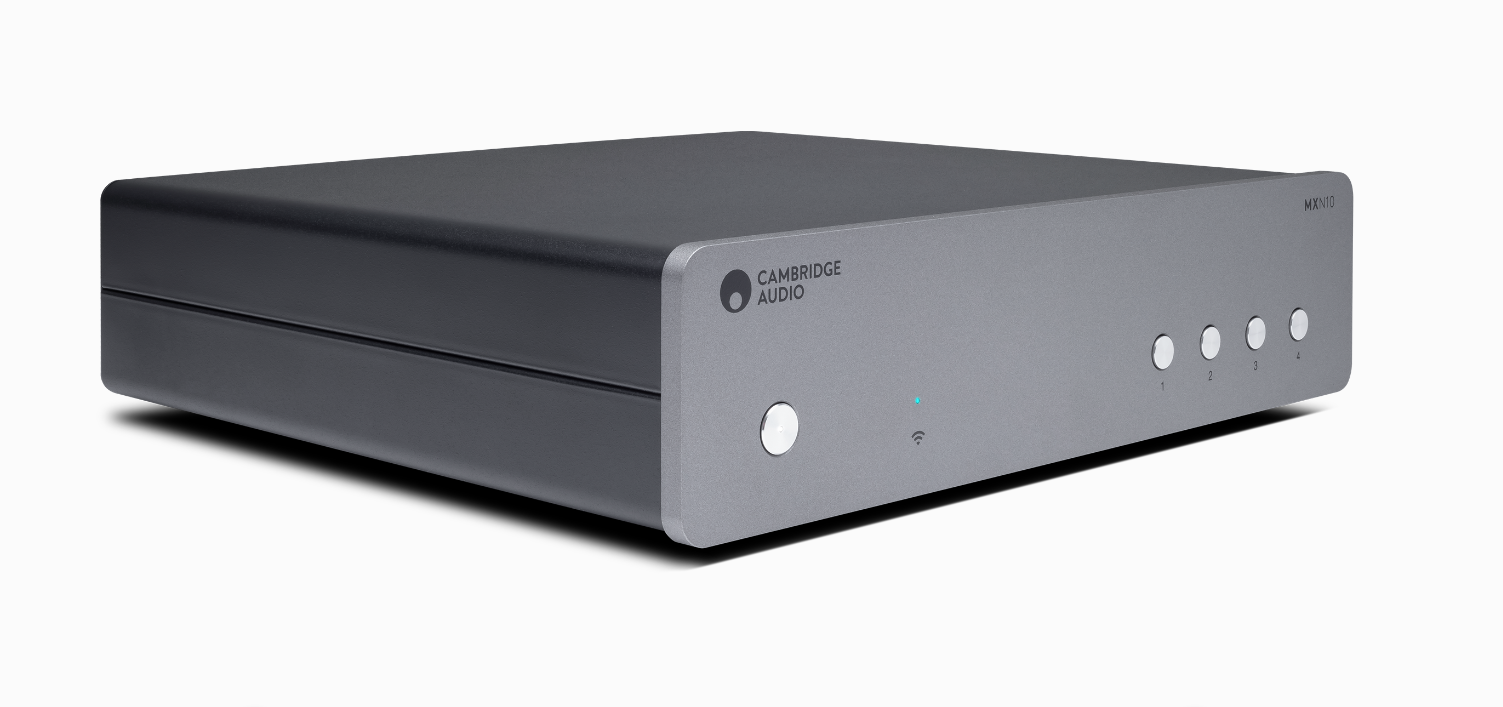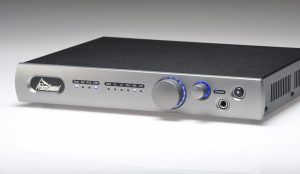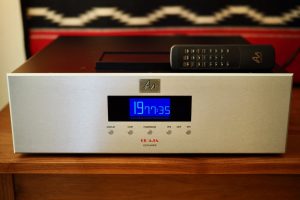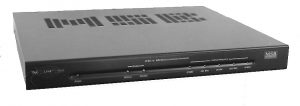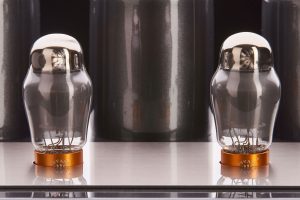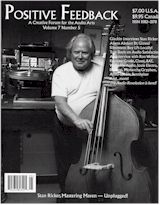It used to be that when traveling out of state, I would tell people I was from Chicago. But in reality, it couldn't be further from the truth. I live in a suburb more than an hour north of Chicago and largely avoid going into the city. Lately, I have begun to be more truthful, telling people that I reside close to the Illinois/Wisconsin border.
I live up here because I prefer the wide-open spaces. Traffic is light, I am surrounded by lakes, forests, and cornfields, and the air is clean, relatively speaking. With a hop into my convertible, a stab to the accelerator takes me to any one of a number of quaint lakeside restaurants and bars in just minutes or allows me to unwind on an empty road. It is my serenity, apart from the boxiness and congestion of the downtown area that I'm required to visit every so often.
Unboxing
Speaking of boxes, the Canor DAC 2.10 ($3995) arrived in Northern Illinois in a substantial one, indeed. Double boxed, packed in foam, and well-cradled, the Canor is treated as precious cargo. Considering that it shipped with tubes installed, the overpacking was a relief, as I removed the nearly 25-pound component from the container. Available in either black or silver, my demo model arrived in the latter.
Adorning the elegant and understated front panel is a large knob which selects inputs and can be pushed to scroll through deeper features of the menu. Below is the power button. Between the two, the Canor logo illuminates orange when the DAC is powered up. To the right lies the 3.5" TFT display, featuring 480 x 320 pixels. Surrounding the volume knob are four small, black buttons. These are mute, dimming of the display, programming enter, and back function.
In the back, inputs for USB, COAX, two optical, and AES/EBU (balanced) sit to the right of both balanced and unbalanced (RCA) outputs. A main power switch resides above the power socket.
Inside is where the magic occurs, though. The Canor DAC 2.10 is a dual-mono design, running two ESS9038Q2M converters in separate signal paths. These 32-bit ESS converters play files up to 768 kHz and DSD up to 512 (USB) and will unfold MQA. Optical and coaxial inputs play up to 24-bit/192 kHz, as does the AES/EBU balanced input.
Four Electro-Harmonix double triode 6922EH tubes glow within, warming up the digital signal, running in dual mono configuration. The DAC 2.10 also utilizes a large power transformer, vacuum impregnated and encapsulated into an anti-vibration compound. It is then covered, creating electromagnetic shielding which Canor claims contributes significantly to improved signal-to-hum distance.
A metal-cased remote is included for power on/off and input selection. The remote also includes functionality for enabling/disabling up-sampling, changing theme, changing re-clock, and scrolling though the digital filters.
Listening
As my demo unit arrived already broken in, I was able to get right down to some intense listening sessions. I found myself splitting my time between CDs sourced from my Music Hall mmf cd 25 transport, utilizing a Transparent Audio Premium coaxial digital cable, and my HP Windows laptop running Qobuz, utilizing the AUDIRVĀNA interface, a USBe Perfect jitter reducer, and an AudioQuest Carbon USB cable. Both produced immediately satisfying results, before even getting all that far into my first night. What I will tell you, is that my system is now pushing into the wide-open spaces.
The Pineapple Thief's "No Man's Land" (CD 16-bit/44.1kHz) instantly demonstrates the expansiveness of the Canor DAC 2.10. There is a considerable opening of the soundstage over my reference DAC, a widening of the sonic landscape that goes beyond mere channel separation, and into prying the barn doors open, letting the sunlight in. The most notable change in sound specifically is in the low end, which is slightly more pronounced, becoming considerably warmer. The overall presentation is certainly more analog. This has me listening to this song three times as I write this, just to hone in more.
While spinning Emerson, Lake, and Palmer's Brain Salad Surgery (16-bit/44.1kHz), the openness of the Canor becomes more apparent. "Still… You Turn Me On" has been in my vernacular since I was knee-high to a grasshopper, and I have heard it on just about every kind of system imaginable. Here tonight, the bass line has a whole new command. Sure, Greg Lake's acoustic dazzled me at first, being cozy and warm through the tubes for the DAC 2.10, but by the time I get that thought out, the bass grabs hold of me and shows me who is boss. I have never before heard those runs so clearly. "Karn Evil 9" pulls me right into the show. Keith Emerson's keys have a life that moves and transforms, with a massive presence that circles around the room but never becomes overpowering. The piano has a delicacy at times, strong percussiveness at others.
Moving up in resolution just a tad, I pop in The Cars' Candy-O, HDCD release (20-bit/44.1kHz). Thumbing the Music Hall's remote directly to the title track hurls me into a sonic kaleidoscope where I cannot help but turn the volume up and be entertained. From the opening swirls to the staccato rhythm guitar, the disc does not disappoint while being fed through the Canor. The DAC 2.10 takes the channel separation here to a whole new level and creates a whimsical playground. Besides the tube warmth, there is remarkable precision, crucial to playback of anything Rik Ocasek touches.
Turning the Canor's center dial a couple of detents to the left, over to the USB input, it is time to invite higher resolution to the party. The DAC 2.10 spreads a buttery smoothness over the top of Tedeschi Trucks Band's "Yes They Will" (24-bit/192kHz) as the four tubes work to emit genuine analog magic out of the digital source. Susan Tedeschi's voice has a glowing sensation, while Derek Truck's guitar lines flow like the glass of his slide. This is a band I have been in the presence of live many times, and the Canor makes great strides and brings that the live, real feeling into my living room.
While in this track, I take the opportunity to dive into some of the deeper features of the Canor DAC 2.10, starting with oversampling. Enabling the oversampling adds just a touch of crispness. The difference is subtle but appreciated. Switching back and forth a few times is required to really dial into what I am hearing, but it is there. Shifting through the multiple filters is an even more granular change in the sonic landscape, but the tweaking aspect opens doors. I hesitate to specify my own preference here, since I believe we all hear music slightly differently, and your musical journey may take you on an alternate path. Choose wisely.
"Flyin' Solo" by Poco (24-bit/96kHz) is a showcase for the Canor's dual mono channel separation abilities. The many, distinct guitars in the track all keep in their own space, spread nearly to the outer walls, nicely defined and sharp, while the drums occupy the center of the room, right about at the coffee table. I don't consider this trickery; rather, the Canor is one of the more expressive pieces of gear in in my system thus far.
I did say it was a party, right? Buddy Guy's "I Let My Guitar Do the Talking" (24-bit/44.1kHz) sounds absolutely enormous feeding through the Canor DAC 2.10. The horns are far right and doing plenty of their own talking as soon as this jumping tune opens up. Guy's guitar envelops the room, digging deep into the carpet. Here again, the dual mono configuration plays superstar as the party rages. Live sound is often mixed mono, so that's a horrible comparison, listening right now is more akin to inviting Buddy and the band over for a jam session and grabbing a seat in the middle of it all. Large, but intimate.
But Wait, a Surprise!
As I was about to go to print with this, my wife and I were settling in on the sofa, relaxing to our iTunes mix, streaming from the same laptop. I hadn't played iTunes since changing over to up-sampling and tweaking the filters. There was now a noticeable, and quite pleasant enhancement, almost the illusion of high resolution, to the lowly CD rips emanating from within the library that treat as so much background music in our house. Why is this worth mentioning in an article about a $4000 DAC? My first thought was that you, as the everyday user, may also be utilizing more lossy formats in some of your listening, such as Spotify, Apple Music, and even still clinging onto your own iTunes libraries. A practical application, indeed!
Wrapping it Up
Inserting a DAC into your signal chain is, and should be, about far more than the simple conversion of a digital signal into an analog one. It should be about transcendence or the elevation of the signal into something much more enjoyable than the original stream of ones and zeros. While I have spent time with a number of high dollar DACs at shows and in various other systems, I have yet to hear a DAC deliver sonic wizardry and soundscape artistry in this manner for under five grand the way the Canor DAC 2.10 manages to perform. The 2.10 is a solid piece of hardware with the delicacy of vacuum tubes, and true dual-mono configuration that never lets you forget any of those facts. Highly recommended.
DAC 2.10
Retail: $3995
Canor Audio




